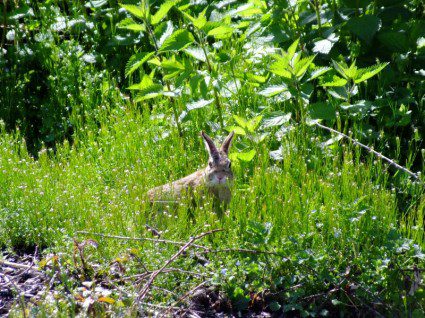Creating a Cottage Garden – Step-by-Step Info on Growing Cottage Gardens
A cottage garden is an informal arrangement of flowers, bulbs, shrubs, and grasses, grouped together in a fairly small space. One reason why cottage gardens are so compact is because when flowers are grouped together closely, there’s less room for weeds to grow. Cottage gardens can also be great for anyone with limited space. Cottage Gardens are the most characteristic gardens in the Informal style of Gardens.
So if you want a cottage garden of your very own, here’s a step by step guide.
1. Choose your location
You’ll want an area that’s large enough to accommodate all the flowers and shrubs that you want to grow, but not too large. Most cottage gardens are grown close to the main house, and often make use of the house itself when it comes to landscaping. It’s not uncommon for climbing vines to grow on the exterior of the cottage or home.
2. Figure out your color scheme
Often with a cottage garden, many different colors are grouped together for a casual and vibrant look. However if you’ve got favorite colors you want to feature, take that into consideration when choosing your flowers. Great colors that look fantastic together in any garden are reds, purples, whites, yellows, and various shades of green found in vines, herbs and shrubs.
3. Draw up a landscaping plan
You’ll want to place high grasses and climbing vines in the back, then fill in to the front of the garden with florals and shrubs of varying heights. Part of the allure of a cottage garden is the eclectic mix of colors and sizes.
4. Start planting
Some great flowers and herbs to plant in a cottage garden include daisies, hollyhock, English lavender, catmint, roses, ivy and feverfew. However most any flower, herb or shrub that you love can be easily worked into your cottage garden. Perennials are great because they automatically come back year after year, more beautiful and bountiful than the year before.
5. Offer a haven for local wildlife
By placing a few birdfeeders in strategic places around your cottage garden, you can have colorful feathered friends visiting your garden daily. To attract butterflies and hummingbirds, plant red columbine, butterfly bush, and trumpet flowers. Any flower with a bright color and a fluted shape is great for these nectar-loving creatures!
6. Perform basic upkeep
Although cottage gardens are designed to be easy to care for, you still may need to pull some weeds now and then and make sure your plants are getting the right amount of water. You may also want to fertilize now and then with a good organic fertilizer or plant food to help your blooms flourish and thrive
7. Enjoy!
One of the best things about a cottage garden is how easy they are to plant and maintain. Even a novice gardener can have a thriving cottage garden that they’ll be proud of year after year!

